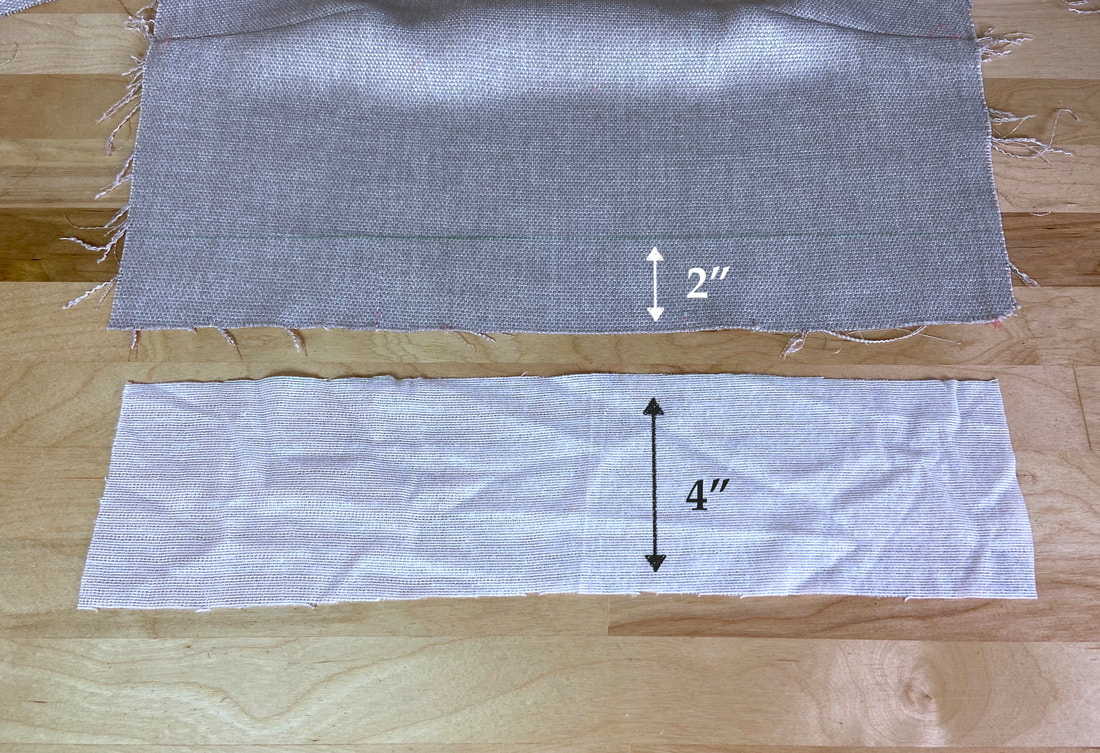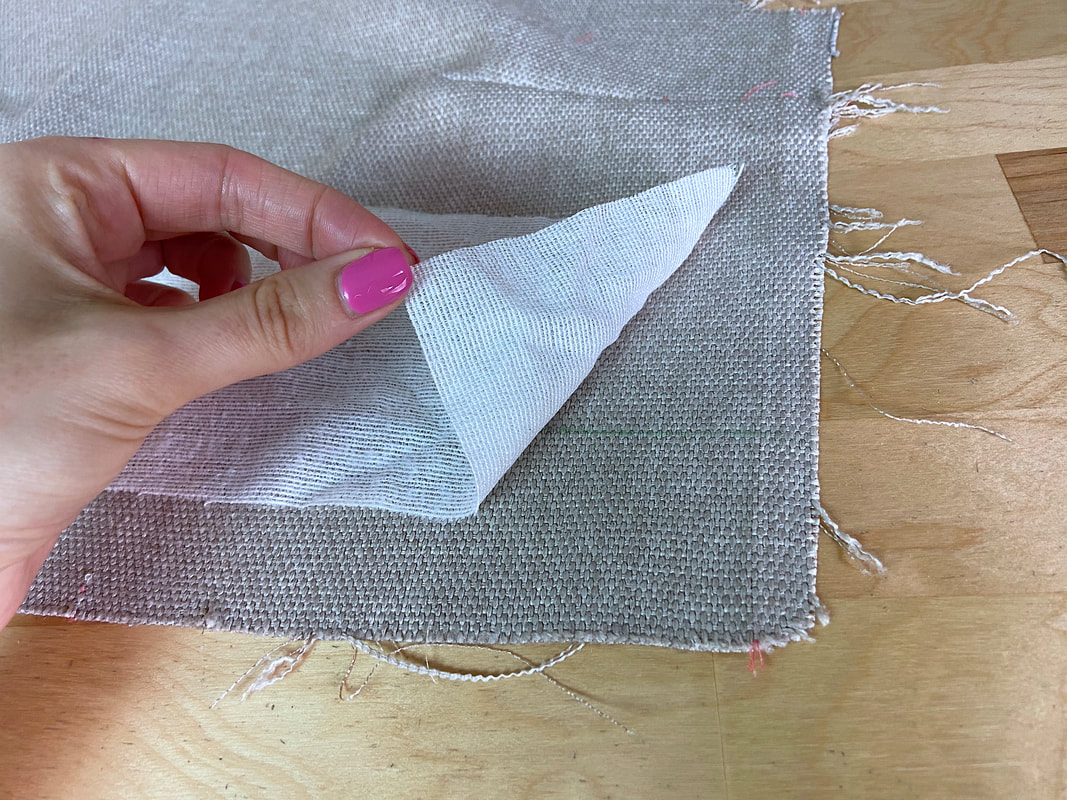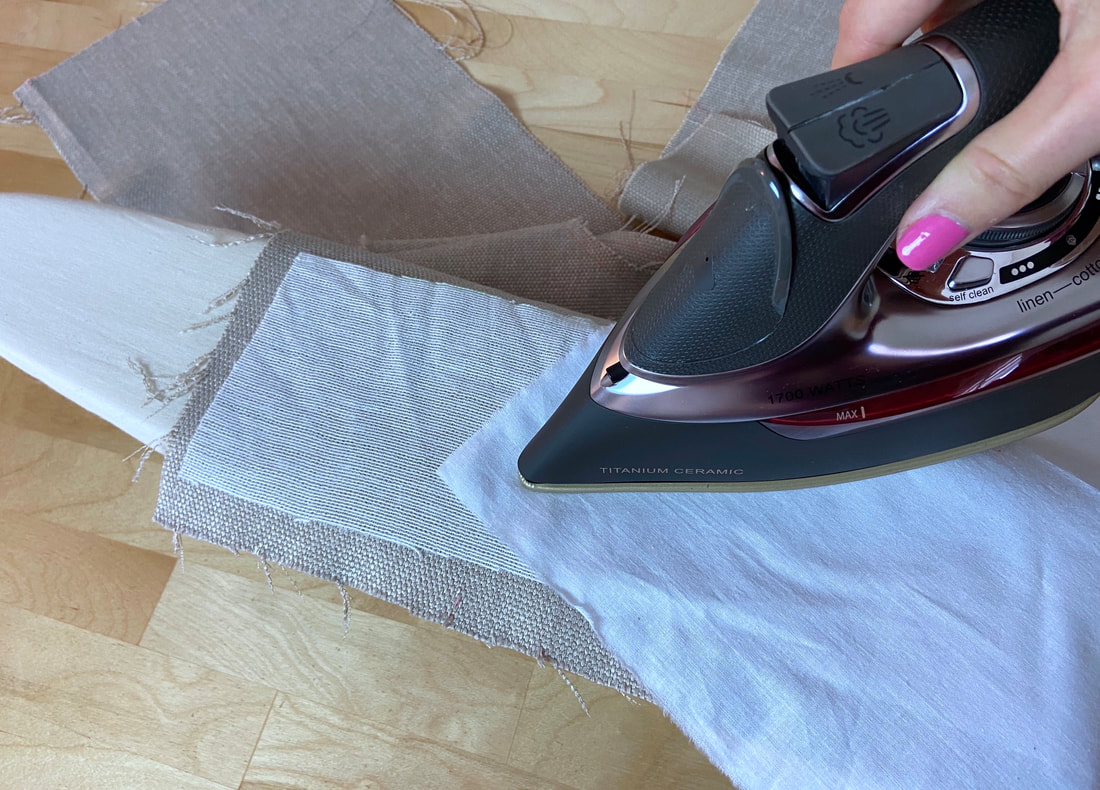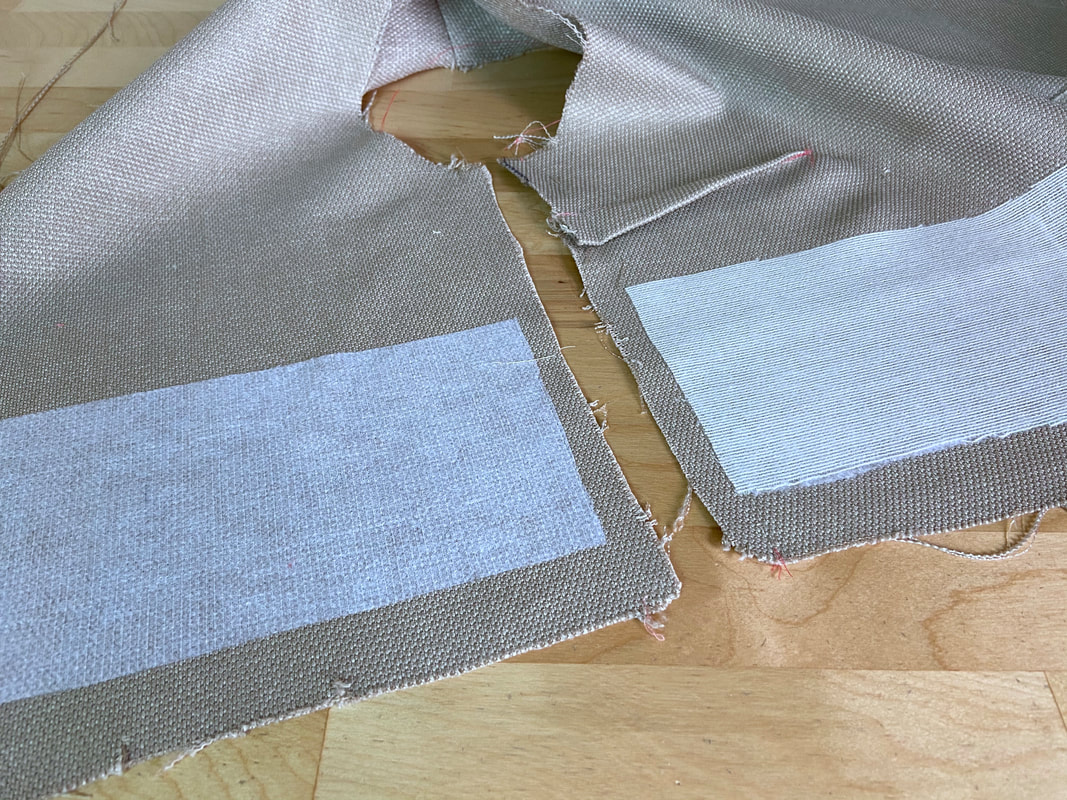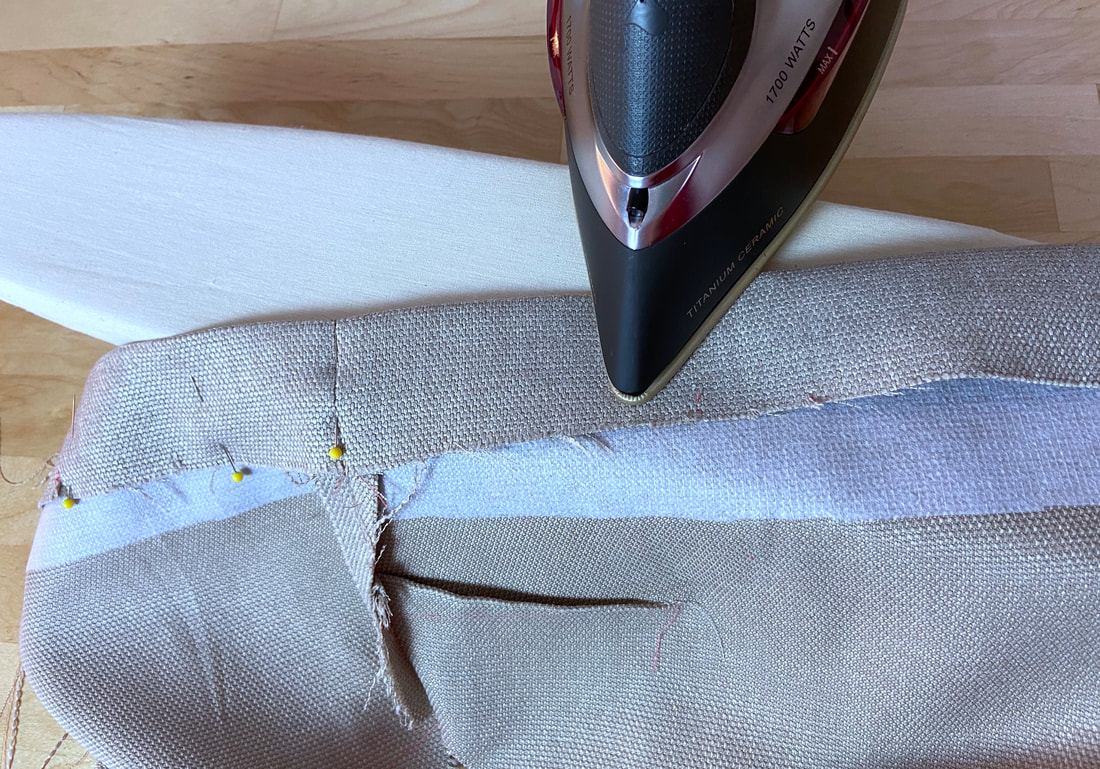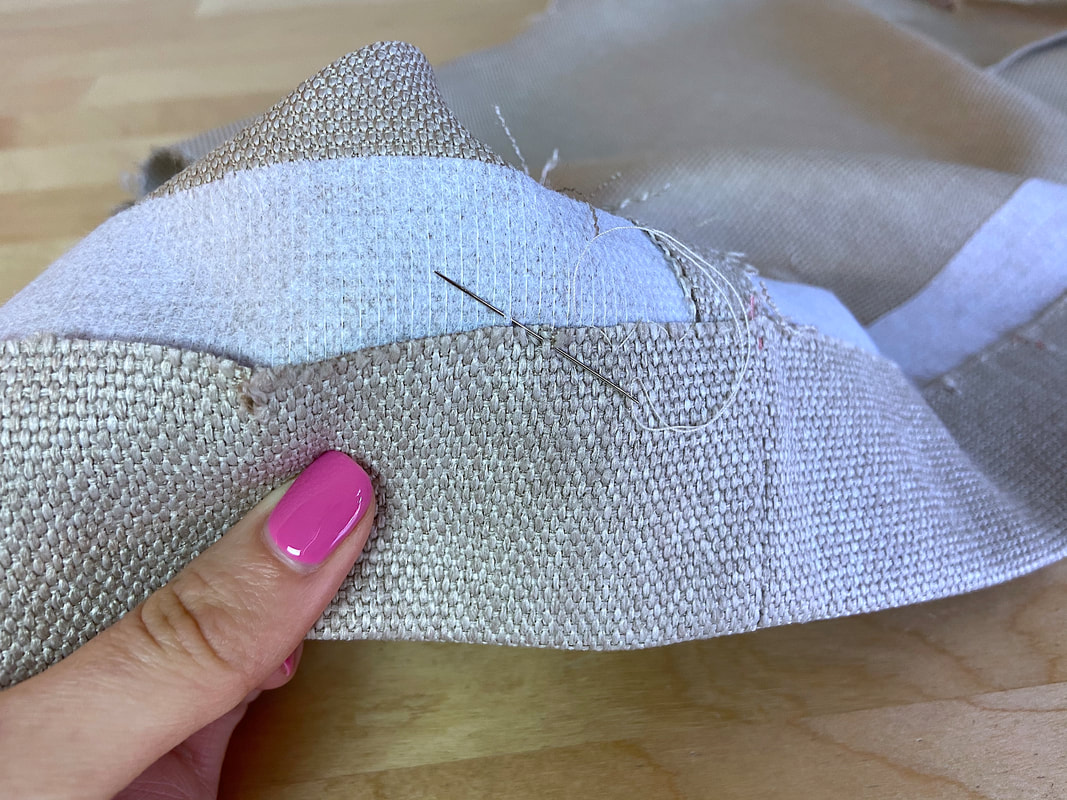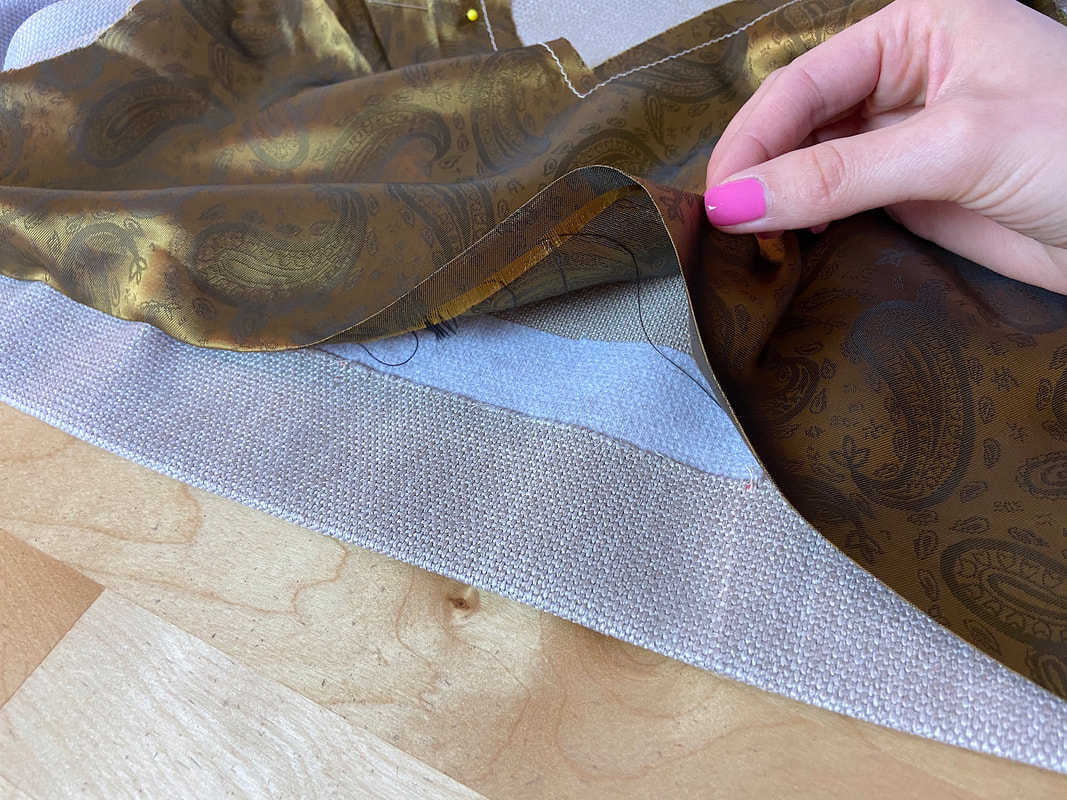How To Interface A Garment's Hem With Fusible Interfacing
Tailored, structured garments can benefit from an interfaced hem. The addition of the interfacing not only maintains the garment's structure, but also adds stability and helps it hang correctly as designed.
In the steps below, the garment is fully lined and fusible (not sew-on) interfacing is used.
In the steps below, the garment is fully lined and fusible (not sew-on) interfacing is used.
1. Start by cutting the individual interfacing strips for each portion of the hem at 2” wider than the garment's hem allowance.
2. Place the interfacing such that its bottom lengthwise edge is positioned 1” down from the garment's hemline with the fusible/adhesive side down. It helps to transfer the hemline directly on the wrong side of the garment pieces as this is quite helpful in the alignment process.
Insert a few pins to keep the layers securely aligned.
Insert a few pins to keep the layers securely aligned.
3. Using a cotton cloth as a protective barrier, iron the interfacing to bond it to the garment layer.
The interfacing should be attached before the seams are sewn. You'll find that this makes the bonding process more comfortable and easy to work with.
4. Fold the hem allowance toward the wrong side of the garment at the designated hem allowance, and iron as you fold to crease the hemline. Insert a few pins to keep the hem allowance layer folded up.
You’ll notice that the interfacing is visible above the hem allowance edge. Rest assured that this is the correct placement for lined garments.
You’ll notice that the interfacing is visible above the hem allowance edge. Rest assured that this is the correct placement for lined garments.
5. Secure the hem allowance edge to the garment surface underneath using a hand-applied hemming stitch. When stitching through the garment layer, catch only about 1-2 threads such that no stitching is visible on the garment's right side.
The interfacing, visible at the top of the hem allowance edge, will now be safely enclosed by the lining layer.
Keep in mind that in the finished garment, interfacing should never be visible on either the face or wrong side of the garment. While in this example, the interfacing is hidden by the lining layer, if your design is unlined, the interfacing should be fully enclosed by the folded hem allowance.
Keep in mind that in the finished garment, interfacing should never be visible on either the face or wrong side of the garment. While in this example, the interfacing is hidden by the lining layer, if your design is unlined, the interfacing should be fully enclosed by the folded hem allowance.

